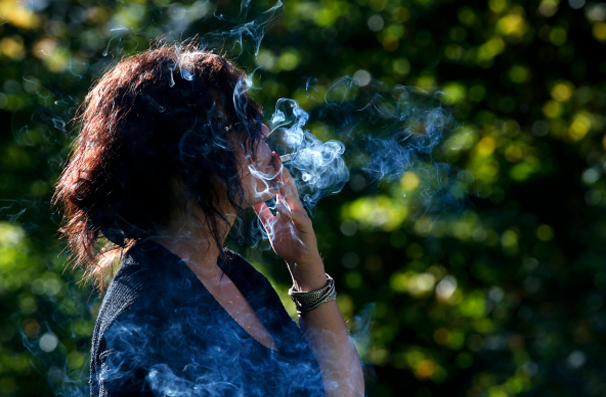Researchers have known for some time that Hispanic and Latino adults in the United States are overall less likely to smoke cigarettes than their white and black peers. But federal data show that one Hispanic group is more likely to smoke than all of them: Puerto Ricans.
Nearly 29 percent of Puerto Ricans smoke cigarettes compared with 20 percent of Cuban Americans and 19 percent of Mexican Americans, showed a recent report from the Centers for Disease Control and Prevention. Only about 16 percent of Central or South Americans smoke. One out of four white and black Americans smoke.
Puerto Ricans’ persistent smoking habit may be traced to the Caribbean island’s tobacco agriculture history and the tobacco industry’s aggressive marketing campaigns there, said Giachello, who researches cardiovascular health and tobacco use in Hispanics and Latinos.
In her tobacco-use focus groups, Puerto Rican participants often say their parents and grandparents were smokers. Smoking was an accepted social norm for many years, in part because it considered a good way to earn a living, Giachello said.
“They wanted those tobacco industries to continue with their prosperity because that was going to lead to better outcomes, in terms of financial gain,” said Giachello, a native of Puerto Rico whose husband died of a smoking-related cancer.
Smoking rates are much lower in Puerto Rico, where only about 11 percent of people smoke. Strict tobacco regulations, the reduction in tobacco farming and other economic changes have helped change attitudes, said Giachello, who has been involved in tobacco prevention initiatives in Puerto Rico.
But many of the 5.4 million Puerto Ricans living stateside have low-paying jobs and live in poor-quality housing. Giachello said financial and emotional stress common among low-income earners may be another reason smoking rates are high among Puerto Ricans, now the nation’s second-largest Hispanic and Latino ethnic group behind Mexican Americans.
The smoking statistics came on the heels of another CDC report released this summer that showed Puerto Ricans appear to have the worst health among not only their Hispanic peers, but also compared with non-Hispanic Americans.
Policymakers use such statistics to decide how to fund health programs, including those that help smokers quit and prevent people from picking up the habit in the first place. But one-size-fits-all anti-smoking campaigns may not work across Hispanic and Latino groups, Giachello said.
“If you have scarce resources, you want those resources, in terms of the Puerto Ricans in the United States, to go maybe more toward smoking cessation than prevention,” Giachello said. “But because we know that Central Americans have lower rates, what we want is to maintain that lower rate.”
Although there has been “considerable progress” in reducing U.S. smoking rates over the past 30 years, the recent findings suggest enough hasn’t been done to curb smoking among Puerto Ricans and Cubans, said Brian King, Ph.D., deputy director for research translation in the CDC’s Office on Smoking and Health.
The statistics underscore “that more targeted efforts are warranted if we’re going to reduce tobacco use universally across the entire population,” he said.
